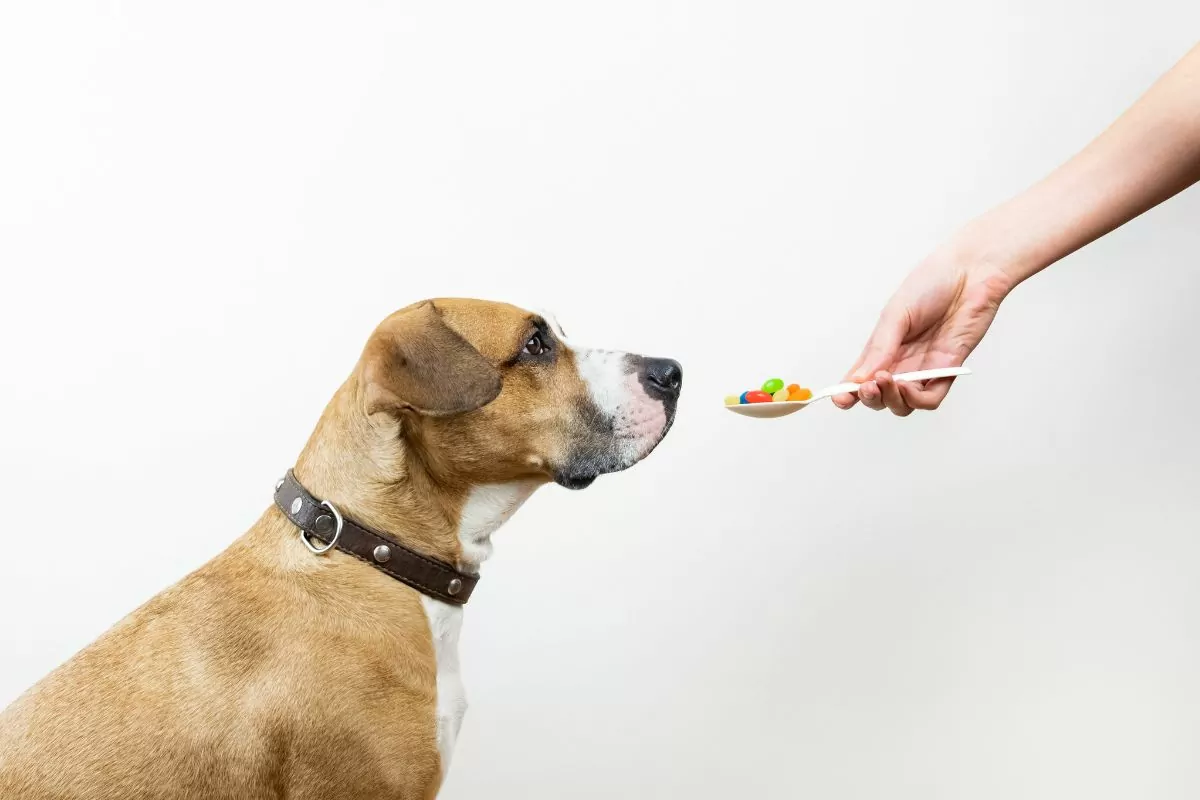In this article, we will talk about whipworms in dogs. These parasites are common worldwide and are primarily found in the eastern and southern USA.
Maybe thinking about parasites makes you uncomfortable, but whipworms should be an exception to the rule.
Parasites are species that live on or inside a host (animal or human being). They are getting nutrients from our beloved animals in order to survive, and in this way, they cause harm to the hosts.

What are Whipworms in Dogs?
Canine whipworms, also known as Trichuris vulpis, are parasites that manifest in dogs’ intestines. They infect the cecum (a pouch in the peritoneum that is considered to be the start of the large intestine) and sometimes the ileum (the final section of the small intestine) and the colon, which causes colitis (inflammation of the large intestines) primarily affecting adult dogs.
Their name comes from their appearance. They have a whip-shaped body that consists of a thin anterior end and a thick posterior end. The thinner part can be found inside the intestinal wall.
An adult whipworm size ranges from 4.5 to 7.5 cm (1.77 in. to 2.95 in.) in length. The whipworm life cycle starts with an egg which turns into a larva – and finally becomes an adult whipworm.
Symptoms of Whipworms in Dogs
In many cases, there isn’t a clinical presentation of whipworms because there is no such parasite infestation in the organism. This is also called subclinical infection.
In other cases, there are symptoms like diarrhea, which can be persistent or intermittent– sometimes with bloody stools and accompanied by pain.
If the infestation is significant, such as in the presence of weight loss or anemia, it can be dangerous for every dog at any age. However, puppies and senior dogs are more susceptible.
How do Dogs get Whipworms?
Dogs get infected by exposure to feces or contaminated environments. The disease is called Trichuriasis. The host (dog) has to ingest an egg, then it hatches in the small intestines, and a larva burrows into the intestinal mucosa or part of the intestinal wall. Then the adult emerges and migrates to the large intestines, colon, and caecum. Finally, they burrow their thinner part into the wall again.
How Do Vets Diagnose Whipworms in Dogs?
The diagnosis of Trihuriasis is made by collecting several animal stool samples and searching for eggs with a microscope. This method is called fecal flotation. Your veterinarian will perform multiple examinations since the eggs are hard to find. The reason for this is these parasites do not consistently pass eggs.
How to Treat Whipworms in Dogs?
You can treat your dog as your veterinarian prescribes. Usually, they give an antihelmintic drug. The treatment is needed to completely eliminate the parasites.
Usually, veterinarians prefer using Fenbendazole or Febantel with a repetition every three weeks for a period of three months.

Pictures of Whipworms in Dog Poop
You can not see whipworm adults in dog poop. The eggs are found after microscopic examination from a fecal sample specifically prepared for this test.
What Happens if I Don’t Get Treatment for My Dog?
Whipworms are a type of internal parasite that commonly infect dogs. If left untreated, whipworm infestations can cause a variety of health problems for your dog.
Some of the potential consequences of not treating whipworms in dogs include:
Intestinal Damage
Whipworms can cause inflammation and damage to the lining of your dog’s intestines, which can lead to chronic diarrhea, weight loss, and anemia.
Dehydration
Chronic diarrhea caused by whipworms can lead to dehydration, which can be dangerous if left untreated.
Immune System Suppression
Prolonged infestations of whipworms can weaken your dog’s immune system, making them more susceptible to other infections and diseases.
Malnutrition
If your dog has a severe whipworm infestation, it may have trouble absorbing nutrients from its food, leading to malnutrition and other health problems.
Spread to Other Pets
Whipworms are highly contagious and can quickly spread to other pets in the household, as well as to humans.
Therefore, it is important to seek treatment from a veterinarian if you suspect that your dog has whipworms. They can recommend the appropriate medication to eliminate the parasites and prevent further health complications.
Additionally, regular deworming and preventive measures, such as proper sanitation and hygiene practices, can help to prevent whipworm infestations from occurring in the first place.
Can Humans Get Whipworms?
Humans rarely get infested with Trihuris vulpis. Trichuriasis is seen in humans, but it is transmitted by a different parasite– it is called Trihuris trichiura.
Is There a Way to Prevent Whipworms in Dogs?
Prevention is key! Ways in which to do this includes frequently removing dog stools and not allowing your pet to eat other animal poop. Lastly, regular deworming by a scheme made by your veterinarian will also go a long way in preventing canine whipworms.

We’ve Got You Covered
Don’t worry! Nowadays, this disease is treatable. If you deworm your dog and prevent it from eating poop, your canine should already be more safer against possible whipworm transmission.
